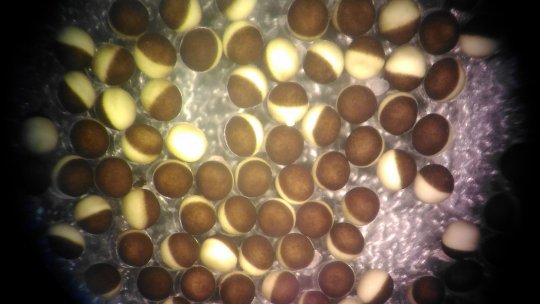Images
Participants



Contact

Published in the journal Nature Structural & Molecular Biology, the study reveals new insights into translation regulation, an essential step in genome regulation.
These findings will help researchers to better understand pathological processes such as cancer.
Translation regulation—the process by which the amount of protein synthesized from its messenger RNA (mRNA) is controlled—is a crucial step in establishing the degree of gene expression during events such as cell proliferation, differentiation, development, nervous system function, as well as in diseases like cancer. Compared to transcriptional regulation, the translational control of existing mRNAs—RNAs are the molecules that carry genetic information for protein synthesis—allows a faster response to stimuli.
The journal Nature Structural & Molecular Biology has published a study on the regulation of mRNA translation by researchers in the Translational Control of Cell Cycle and Differentiation Laboratory at the Institute for Research in Biomedicine (IRB Barcelona). Headed by ICREA Research Professor Raúl Méndez, an expert on the CPEB (cytoplasmic polyadenylation element binding protein) protein family, this study reveals the interplay between the proteins CPEB1 and Musashi1 (Msi1) in the regulation of mRNA translation.
The CPEB family of proteins is responsible for the translational control of maternal mRNAs by a process called “cytoplasmic polyadenylation”. “In this study our aim has been to determine whether Msi1 and CPEB1 act cooperatively to regulate mRNA polyadenylation,” explains Eulàlia Belloc, co-first author of the study and associate researcher with Méndez’s Laboratory.
In the study, researchers have identified that “even though polyadenylation of a CPE-containing mRNAs relies on CPEB1, for c-mos, net1 and probably other mRNAs, a nearby Msi1 binding site is required to remodel the RNA secondary structure so that the CPE becomes accessible,” Belloc explains.
Through a genome-wide analysis of CPEB1- and Msi1-associated mRNAs in the frog Xenopus laevis model, the scientists have identified 491 common targets, thus revealing a new layer of CPE-mediated translational control. “We have estimated that more mRNAs could also be co-regulated by CPEB1 and Msi1,” comments the researcher.
A combinatorial code
“Several years ago our lab defined a combinatorial code where the number and distance of the CPEB binding element (CPE) to the PAS (polyadenylation signal), as well as the presence of additional cis-acting elements, determine the transcript-specific spatiotemporal pattern of translation,” explains Eulàlia. The findings described in this work now deepen our knowledge of the combinatorial code, allowing us to better understand diseases such as cancer—a process in which this translational regulation is altered.
This study has received funding from the Fundación Botín and the Banco Santander (through its Santander Universities Global Division), the Asociación Española Contra el Cáncer (AECC) (Spanish Association Against Cancer), the Worldwide Cancer Research, MINECO (Spanish Ministry of Economy, Industry and Competitiveness) and ERDFs.
Reference article:
Laure Weill, Eulàlia Belloc, Chiara Lara Castellazzi and Raúl Méndez.
Nature Structural and Molecular Biology (2017) | doi: 10.1038/nsmb.3434
(Written by: Llúcia Ribot)
About IRB Barcelona
Created in 2005 by the Generalitat de Catalunya (Government of Catalonia) and University of Barcelona, IRB Barcelona is a Severo Ochoa Centre of Excellence, a seal that was awarded in 2011. The institute is devoted to conducting research of excellence in biomedicine and to transferring results to clinical practice, thus improving people’s quality of life, while simultaneously promoting the training of outstanding researchers, technology transfer, and public communication of science. Its 24 laboratories and seven core facilities address basic questions in biology and are orientated to diseases such as cancer, metastasis, Alzheimer’s, diabetes, and rare conditions. IRB Barcelona is an international centre that hosts more than 400 employees and 36 nationalities. It is located in the Barcelona Science Park. IRB Barcelona forms part of the Barcelona Institute of Science and Technology (BIST) and the “Xarxa de Centres de Recerca de Catalunya” (CERCA).
About IRB Barcelona
The Institute for Research in Biomedicine (IRB Barcelona) pursues a society free of disease. To this end, it conducts multidisciplinary research of excellence to cure cancer and other diseases linked to ageing. It establishes technology transfer agreements with the pharmaceutical industry and major hospitals to bring research results closer to society, and organises a range of science outreach activities to engage the public in an open dialogue. IRB Barcelona is an international centre that hosts 400 researchers and more than 30 nationalities. Recognised as a Severo Ochoa Centre of Excellence since 2011, IRB Barcelona is a CERCA centre and member of the Barcelona Institute of Science and Technology (BIST).




